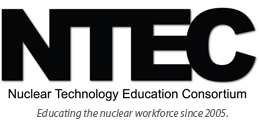N02: Nuclear Fuel Cycle
This unit aims to:
Provide an overview of both open and closed uranium nuclear fuel cycles in fission and introduce some selected parts of the fusion fuel cycle, addressing the operations and processes that constitute these fuel cycles with an emphasis on the associated underpinning science and engineering.
Provide an understanding of the different radiological and chemical risks encountered in nuclear fuel cycles, allowing for the determination of viable risk mitigation strategies.
Develop an appreciation of the complexities involved in working in the nuclear industry, and reason the associated public perception and policies.
Brief description of the unit
The unit will provide an introductory overview of all aspects of the nuclear fission fuel cycle and some parts of the fusion fuel cycle including the acquisition of fuel source material, the fabrication of fuel, energy generation, treatment, transport and disposal of nuclear waste, decommissioning techniques and fuel recycle strategies. Emphasis on these topics will be placed on the nuclear industry within the UK, but processes used throughout the world in the nuclear sector will also be considered. Students will gain a basic understanding of the radiological hazards associated with working in the nuclear industry and how the associated risks can be successfully managed. Historical perspectives of nuclear energy production will be explored in conjunction with public perceptions of the nuclear industry.
Intended Learning Outcomes
| Describe, explain and critique the various processes that constitute the nuclear uranium fission fuel cycle. |
| Describe, explain and critique selected processes that are likely to be implemented in the nuclear fusion fuel cycle. |
| Explain the concept of proliferation resistance and understand how it impacts public acceptance of nuclear energy. |
| Understand and explain the risks associated with the management of radioactive materials, nuclear process operations and decommissioning of nuclear sites, and propose viable risk mitigation strategies. |
